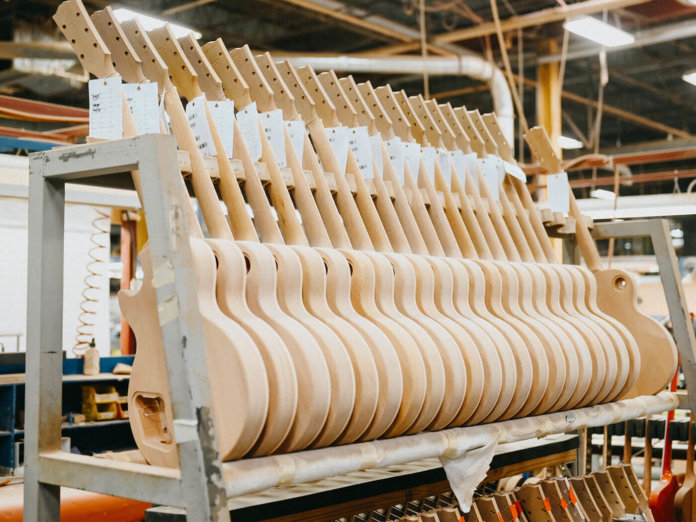Using rare and quality woods from old-grown trees, the guitar manufacturing industry has been a miner’s canary – dealing with multiple scandals including illegal logging, scarcity of resources, and new laws and regulations regarding trades in vulnerable tree species.
Geographers at the University of Wollongong, Australia, visited various guitar factories across the globe, analyzing materials and techniques used during manufacturing. Chris Gibson and Andrew Warren, for six consecutive years and five different continents, tracked down the process of guitar making. The focus was on the use of timber – well known in the industry as tonewoods, thanks to their beautiful acoustic capabilities, and the environmental puzzle faced by the industry.
The production of 2.6 million guitars every single year makes it a US$1 billion industry. Wood slices used on guitars are in perpendicular cuts towards the growth rings. This cut, also known as quarter sawn, makes sure the sound wave is properly projected and ensures good stability. A major reason is that rare woods from old-growth trees are the guitar maker’s first choice.
Large diameter logs are preferred as slices are required to be in enough width to craft the front face, back, or sides of the instrument. This is followed by carving, sanding, and assembling of the guitar parts, either by hands or machines. The soundboard on the top of the instrument is very critical.
Until recent times, a very narrow and specific range of timber species such as spruces (Picea) were used for soundboards in classical and acoustic guitars. Luthiers, through years of traditional European craftsmanship, have preferred this one for its strength, which keeps it from collapsing under extreme string tension when cut thinly.
Mahogany and maple for necks, ebony or rosewood for fretboards and bridges, and rosewoods and mahogany for backs and sides in acoustic guitars. Hawaiian music, with its expansion, also included the use of koa (Acacia koa) on ukuleles.
Gibson and Warren, while tracing guitar manufacturing all the way back to the trees from which the wood came, found that while some are plentiful and well managed, other woods are struggling with sustainability problems. One such example is Sitka spruce (Picea sitchensis), which comes from a species of at least 400-year-old trees that are in scarcity now. Ebony is also under the same threat in its African habitat.
“Habitat destruction of agriculture and urbanization led to Brazilian rosewood — once considered the “gold standard” for guitars — being effectively banned from use since 1992. Guitar companies replaced it with similar species from other places, but they too were over-harvested. Scandals have engulfed the industry.” – stated the researchers.
Despite these facts, Gibson and Warren witnessed growing concerns among the musicians, regarding the origin and manufacturing of their instruments, and their environmental impact. They were seen encouraging brands to go easy with transparency and paying attention to their environmental impact by promoting a vast variety and range of alternatives for timber.
Australian brands Maton and Cole Clark are among the first to lead the way for other players on the field. Been working with native timber species for decades, they are now heading towards a more sustainable option, substituting native ones with bunya pines, Blackwood, and Queensland maple for soundboards, backs and sides, and necks respectively.
Simultaneously, people in timber industries are indulging in the planting of trees for future sustainable manufacturing of instruments. From using their own properties for plantations to partnering with various field experts for the purpose, the future goal of sustainable and efficient guitar making is the ultimate driving force behind these efforts.
Written By – Tazeen Ansari

